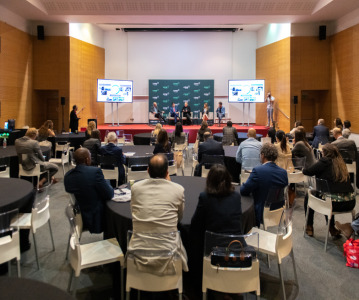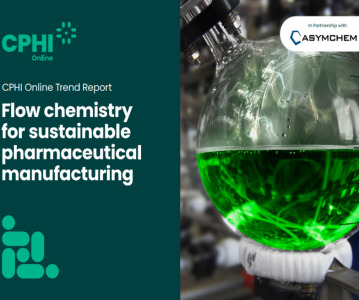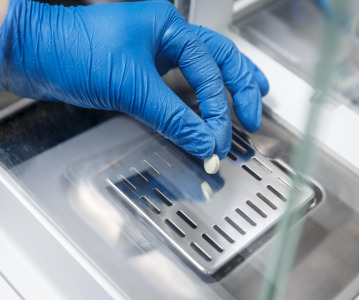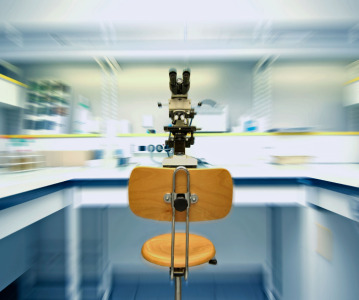Pharmapack interviews Serkan Oray of UCB Pharma

Ahead of Pharmapack Europe 2021 in October, we talk to one of the speakers, Serkan Oray, Vice President, Devices, Packaging & Wearable Technologies at UCB Pharma about the company's new electromechanical injection device and the innovation drive within the connected health market
Can you give us an overview of your presentation topic for Pharmapack 2021?
We will be speaking about the new version of our electromechanical injection device (e-Device), which has been CE marked and launched in Europe. It brings together a number of improvements and new features in comparison to our first-generation device, notably the introduction of new connectivity features and a companion application. Our presentation will cover both technical considerations as well as the internal journey to prepare our company for introducing this product into the market.
Why is this topic important at this time?
Although connected health has now become an old topic, there are still very few examples of how it is used outside of a few niche indications. As the world has accelerated its technical expectations with regards to healthcare, we expect to see more practical and tangible solutions entering into the marketplace in the near future.
Will COVID-19 have any long-term effects on the development of connected health?
Yes, we believe that patient expectations as well as the expectations of the broader healthcare community have shifted dramatically due to COVID-19 and the immediate healthcare needs during this period. It’s hard to predict exactly how this will evolve in the short term as our society re-adjusts post-pandemic, however the convenience and connected nature of understanding one’s own health care is likely to be maintained for the long term.
What typical barriers to successful self-injection does the ava® electromechanical injector overcome?
Even with the first version of ava®, the e-Device was designed with and for patients, principally for those who wished to combine ease of self-injection (hidden needle and an automated delivery system) with increased self-injection control (e.g. speed of injection control, injection pause features). The new version, ava Connect®, now adds connectivity as well as additional supportive information and guidance with a companion application. This connectivity can help guide and facilitate conversations with healthcare professionals to address the needs and challenges of the patient.
What are the biggest challenges facing the connected health market?
One of the biggest challenges facing the connected health market is the internal value discussions that get companies or business units to invest and put sufficient effort and capabilities in marketing these new technologies. These discussions can range from the potentially expensive need to demonstrate specific patient outcomes, to more modest ambitions around delivering patient value through improving patient experience. Understanding the ambition for a new connected device is important to understand the go-to-market preparation and investment.
How will the connected devices and companion apps better serve patients?
By allowing patients to track and follow their own treatment, we believe that patients will have more control of their own health. The data they generate will be their own and their own consent preferences will determine how the data can be further shared.
Related News
-
News CPHI Pharma Awards 2024: Meet the winners from the CPHI Celebration
This year we had a lot to celebrate, the 35th Anniversary of CPHI, and our esteemed award winners, of which we included two additional categories this year, the Future Leader award, and Woman of the Year award. -
News Women in Pharma: C-Suite Journeys in Leading Diversity
In this CPHI Milan special of our monthly series, we sit down with our panel of C-suite executives speaking on the ‘Leading with Diversity: The CEO Journey’ panel at this year’s show. -
News The BIOSECURE Act: implications for the pharma supply chain
On September 9, 2024, the US House of Representatives voted to pass the bill titled the BIOSECURE Act (the Act), which lists several Chinese companies in the pharmaceutical supply chain. The Act will prohibit American companies from contracting or doin... -
Sponsored Content CPHI Online Trend Report: How can flow chemistry help businesses achieve their sustainability goals?
In our latest CPHI Online Trend Report, we partner with Asymchem to understand the innovative potential of flow chemistry for API manufacturing, especially in regards to meeting sustainability goals. -
News CPHI Milan Speaker Spotlight: CDMO relations with Pharma and Start-Ups
In the run-up to CPHI Milan, we sit down with some of the experts and thought-leaders speaking at this year’s conferences. -
News Women in Pharma: Advocating for trans healthcare in pharma
In our monthly series on women in the pharmaceutical industry, we interview leading experts in the pharmaceutical supply and value chain to discuss the importance of gender diversity in healthcare, the workplace, and beyond. -
News A Day in the Life of a Vice President in R&D & Engineering
In the Day in the Life of Series, we've already had the chance to get to know a range of people in various roles in the pharma industry. In the latest interview we get a glimpse into the R&D side of things from Jennifer Sorrells, Vice Presiden... -
News CPHI Podcast Series: analysing supplier audits with the PSCI
This episode of the CPHI Podcast Series, hosted by Digital Editor Lucy Chard, goes through the results from the recent audits from the PSCI conducted on suppliers across the pharmaceutical industry, looking into ESG outcomes.
Position your company at the heart of the global Pharma industry with a CPHI Online membership
-
Your products and solutions visible to thousands of visitors within the largest Pharma marketplace
-
Generate high-quality, engaged leads for your business, all year round
-
Promote your business as the industry’s thought-leader by hosting your reports, brochures and videos within your profile
-
Your company’s profile boosted at all participating CPHI events
-
An easy-to-use platform with a detailed dashboard showing your leads and performance





.png)

